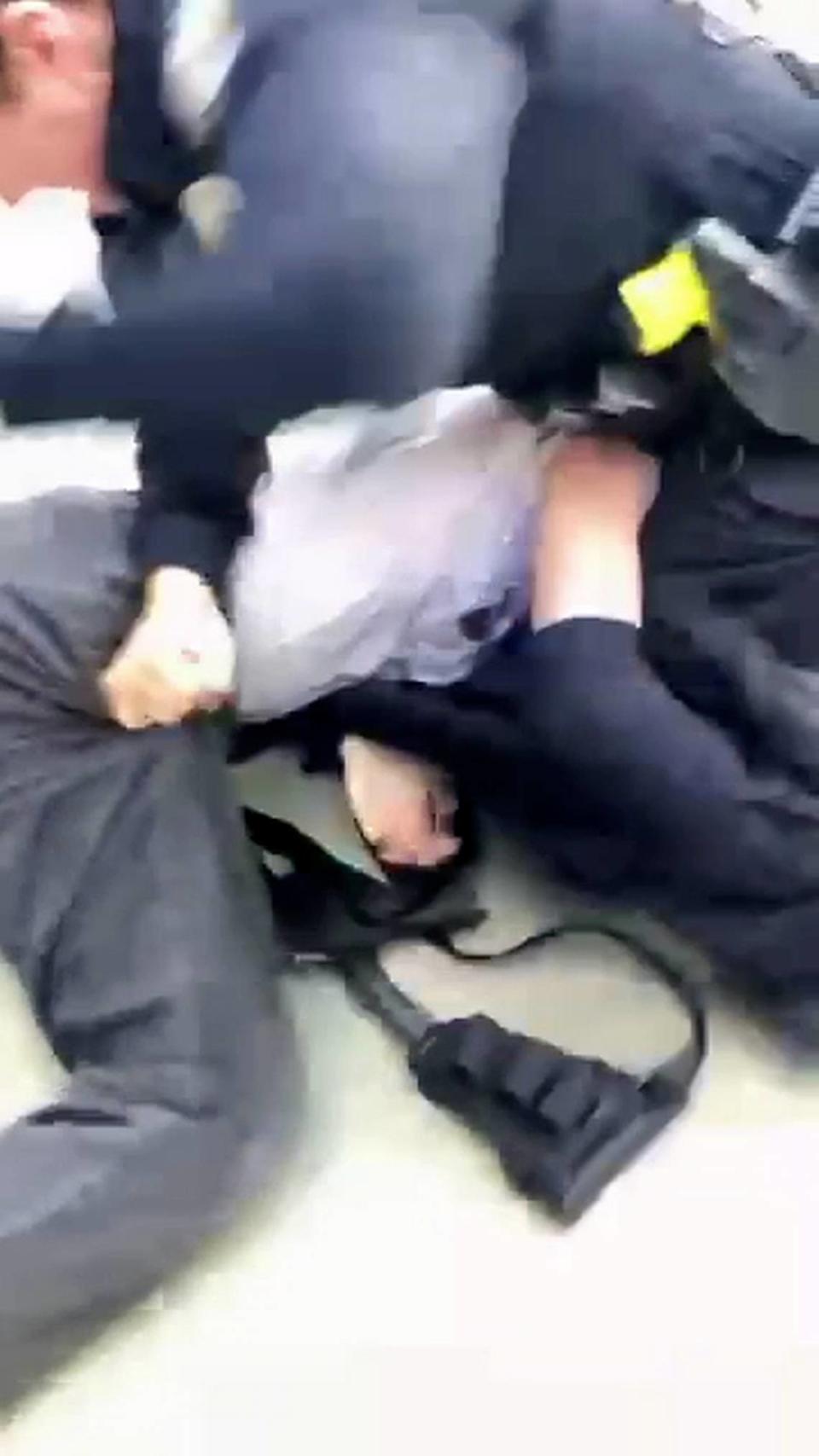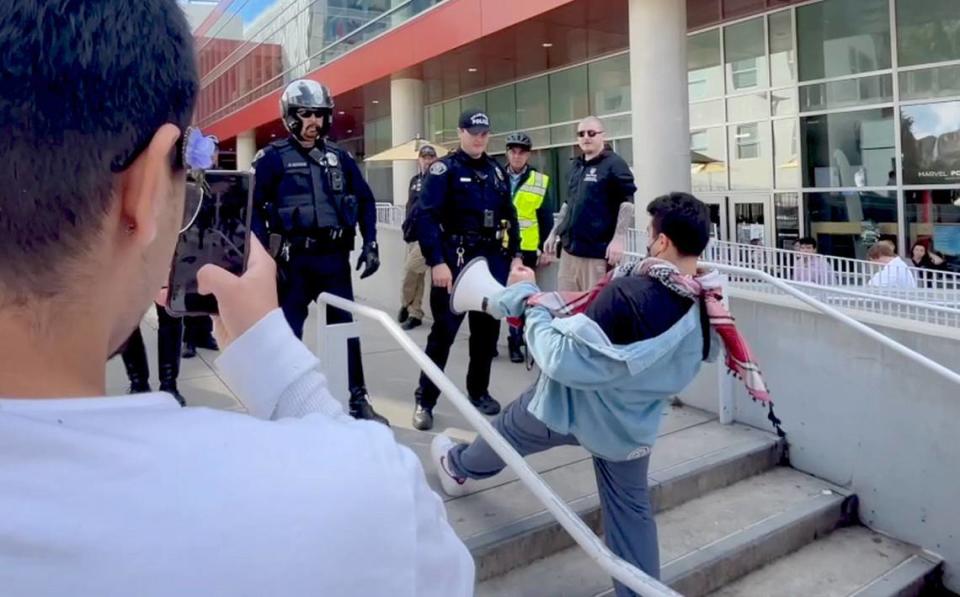SLO officer did not violate policy when he hit protester at Cal Poly, police chief says
- Oops!Something went wrong.Please try again later.
The San Luis Obispo police officer who was captured on video striking a protester at Cal Poly did not violate agency policy, the chief confirmed to The Tribune on Thursday.
The protester, 20-year-old Ollie Lamkin, was one of eight arrested at a Jan. 23 protest in support of Palestine. About 20 people participated in the demonstration, marching through campus to the Rec Center, where they protested weapons manufacturing companies such as General Atomics and Lockheed Martin who were recruiting students at the university’s Winter Career Fair.
Lamkin — along with Daria Birkholz, 23; Alejandro Bupara, 29; Raleigh Delk, 26; Sarah Heath, 30; Marcus Hicks, 26; Elyzajaenine Santos, 23; and Timothy Jouet, 56 — faces misdemeanor charges of battery of a peace officer, according to a complaint filed by the San Luis Obispo District Attorney’s Office on March 5.
Additionally, Lamkin was charged with a misdemeanor of resisting, obstructing or delaying a peace officer, the complaint said. Shanae Martinez, 38, was also included in the complaint and accused of misdemeanor charges of battery of a peace officer.
Video of the incident showed an unnamed San Luis Obispo police officer tackling Lamkin and striking them multiple times. San Luis Obispo Police Chief Rick Scott told The Tribune that an internal affairs investigation found the use of force did not violate the agency’s policy.
He said the investigation “verified” Lamkin reached for the officer’s “less than lethal weapon,” which shoots foam rounds meant to hit a person without causing injury.

Every use of force incident is reviewed “under a microscope,” Scott said, and this particular one amounted to the officer striking Lamkin three times in the abdomen.
This was not in violation of policy because at that time the officer could not call for help — all the other officers were busy with other protesters — and Lamkin was reaching for the officer’s weapon.
“The reason that’s appropriate: Had that person gained control of that weapon, it is lethal at close range,” Scott said. “Had that person grabbed that and either intentionally or accidentally pulled the trigger, it could have struck the officer, it could have struck any other person present within 10 feet and that device could be lethal so it’s a very, very high-stakes situation.”

The same officer who tackled Lamkin was also videoed pushing Cal Poly student Samir Ibrahim down a flight of steps. Ibrahim described the officer who pushed him as “really aggressive” and told The Tribune he was speaking into a megaphone as he backed up toward the stairs when an officer shoved him as he turned around to walk away, which sent him stumbling down the steps.
In the video, Ibrahim responds by walking back toward the stairs and reaching his foot out onto the top step in front of the officer, who then lunges at him saying “you’re going to jail,” before Ibrahim retreats.
Scott said the officers had formed what’s called a “skirmish line,” and the officer had ordered everyone to clear the area several times.
“The problem was (Ibrahim) physically wasn’t moving,” Scott said. “The officers were advancing to clear that area. It is a non-negotiable. You must clear that area or you go to jail. It certainly doesn’t look good when a person is shoved, but the only alternative would have been to place him in cuffs.”
Scott said it’s his goal that officers don’t have to use force at all during interactions with the public, but he said sometimes it’s needed when situations escalate and no other options are available.
He said he encourages his officers to take a “least harm approach,” meaning they should respond to situations with the goal to prioritize safety and deescalate tense situations.
The Tribune attempted to reach Lamkin but had not heard back as of Thursday afternoon.

